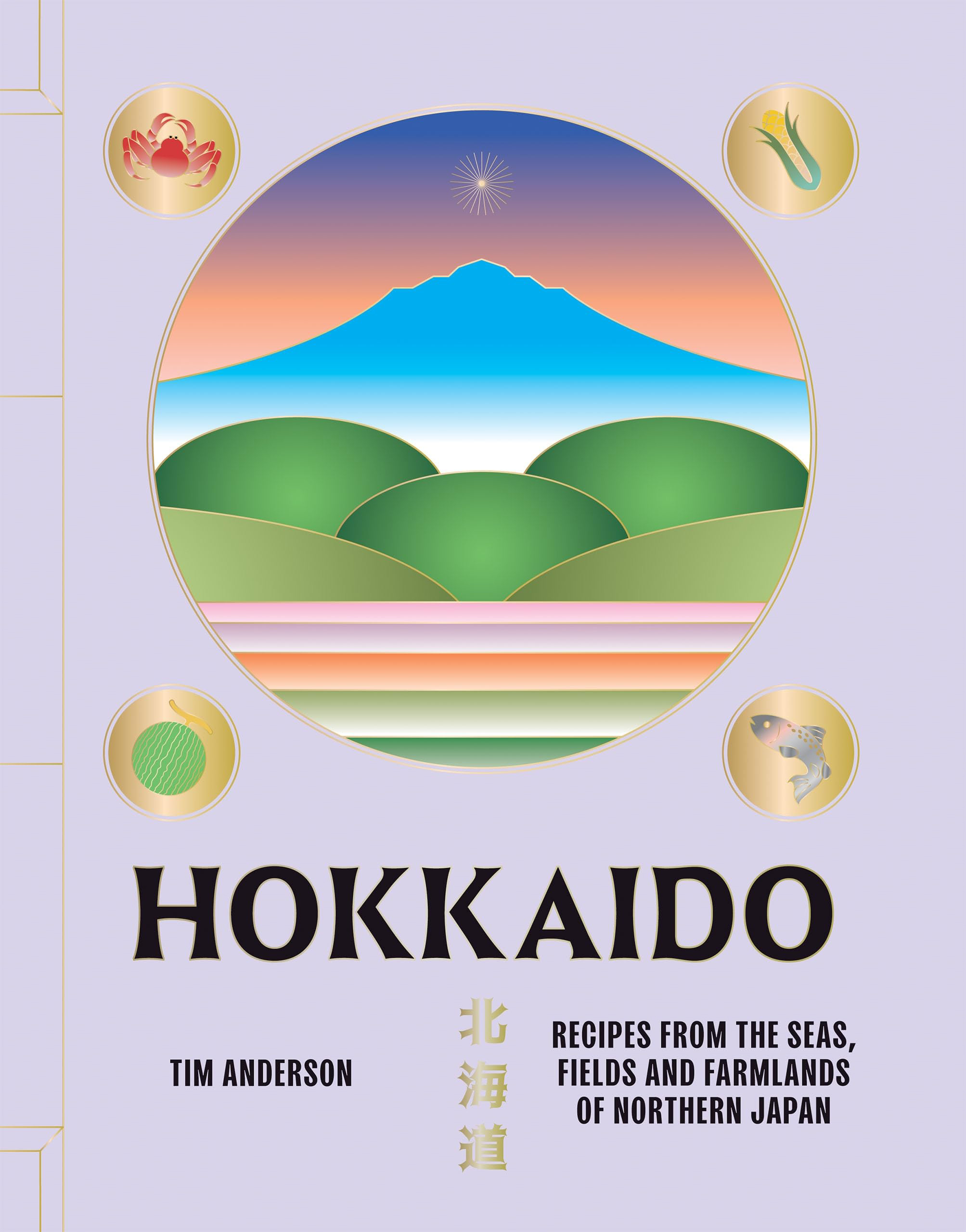 Version 1.0.0
Version 1.0.0
Irankarapte! The indigenous Ainu greeting of “hello” or “good day,” which also means “Allow me to softly touch your heart,” has been adopted as a symbol of Hokkaido’s hospitality.
Tim Anderson, the prolific author of over half a dozen books on Japanese food and recipes—from Izakaya to Ramen, to Vegan Japan Easy and countless others—has brought forth his newest publication, Hokkaido: Recipes From The Seas, Fields and Farmlands of Northern Japan. It’s a surprising choice, due to the somewhat unfamiliar (some might even say obscure) location and comparatively unnoticed (possibly ignored) food fare. But that’s Anderson for you, always cooking to the heat of his own unique wok (chūkanabe). It’s one of the reasons he has such a loyal foodie fanbase.
Hokkaido, the second largest and northernmost of Japan’s main islands, is the latest target of Anderson’s current kitchen venture. In 1869, Japan colonized the island and renamed it from Ezogashima (Ezo Island) to Hokkaido (North Sea Circuit or Road). The Nihonjin leaders then forced assimilation of the Ainu into its society, oversaw the resettlement of Japanese people on to the island, and then redeveloped the region. The influences from both the distinct Ainu culture and the Japanese settlers combined to form a unique identity for Hokkaido, making it markedly different, and of escalating interest, from the rest of Japan.
Today, the largest and northernmost prefecture, the island is renowned for its fascinating native culture, abundant seafood, and stunning natural beauty replete with volcanic lakes, hot springs, and diverse wildlife; its world-class powdered snow which draws skiers and snowboarders from across the globe; and its celebrated Sapporo Snow Festival ignites visitors’ euphoric enthusiasm.
With his Hokkaido volume now on the market, Anderson may become a prime publicist for the often-overlooked prefecture, for several reasons. While the adage, “Don’t judge a book by its cover,” is a reminder that internal content or quality of the read may or may not necessarily reflect its worth, the Hokkaido cover is an exception.
Swaddled in an aesthetically-elegant, attention-grabbing jacket and embellished with attractive illustrations and artwork within—the consequence of a continuing bond between Anderson and Evi O Studio which has designed a number of his books – Anderson’s book covers have become a significant recognizable marketing tool: a visual sales pitch. On retail displays, the publication captures one’s ocular gaze, hypnotically drawing the hands of Anderson’s loyal fans and rookie readers forward, clutching the volume to uncover what lies within.
Skimming through the pages, the “ah” and “oh” moments reveal a collection of surprisingly atypical recipes that challenge one’s inner chef to note the unique possibilities that may lie ahead in one’s kitchen laboratory. “The Genghis Khan BBQ,” a local dish in which mutton and vegetables are roasted together on a “dome-shaped cast-iron griddle, meant to evoke Mongolian shields,” is one of the most popular soul foods of Hokkaido. A recipe for it, followed by others for the “Fatso Burger,” “Pork Knuckle Soup,” “Laminated Milk Bread,” and “Rice-Stuffed Squid” leap from the pages. Before rapid blinking and rolling of eyes begin, accompanied by sudden thoughts of book bailout, know that the cookbook is fully loaded with Ainu takes on more familiar fare: gyoza, tempura, curry, ramen, hot pots and other tasty dishes. In addition, the near edible photo portraits accompanying the recipes intimate the possibility of table orgies to come.
Hokkaido devotes its contents to: “Welcome to Hokkaido” (covering its culture and local food), “Ainu Food” (a sampling recipes broken into categories: Sides, Small Dishes and Snacks; Big Dishes and Main Meals; Sweets), and “Fundamentals and Resources” (additional recipes and the basic ingredients used in them).
Anderson’s approach in his newest work takes the reader on a journey of discovery beyond cookery. He weaves stories and details of the people of the area, the unusual terrain one encounters, the historic backdrops over time, and through it all his interest in and respect for Hokkaido and its people – Indigenous and waijin (Japanese settlers). It’s a love letter writ large through discovery and introspection.


AloJapan.com